by Ros Sansom (née Dillon)
The conveniences of modern-day living have transformed our lives and streamlined the mundane aspects of our daily living; particularly our bathing and laundry routines. It is hard to believe how much things have changed, especially when I compare it to how it used to be when I was a young girl growing up in 1950s.
I lived at 34 Penny Street in Salford. The house was typical of its time, having two bedrooms, a kitchen and a living room. We had no central heating, no hot water in the kitchen (unless you boiled a kettle/pan), and no bathroom. The toilet was situated in a small outbuilding in our back yard. Obviously, access to bathing was a problem. Some of my neighbours had tin baths hanging in the yard, but the logistics of boiling water to fill them wasn’t practical.
The solution was to go to Hodge Lane Public Baths once a week. I was taken there by my mum, along with my two brothers. We had to take soap, towels, and a clean set of clothes to change into. It cost thruppence.
Whilst mum went off to chat with friends, she left me, aged seven years old, with my younger brothers, who were aged five and four. In those days, it wasn’t unusual for an older child to look after younger siblings.
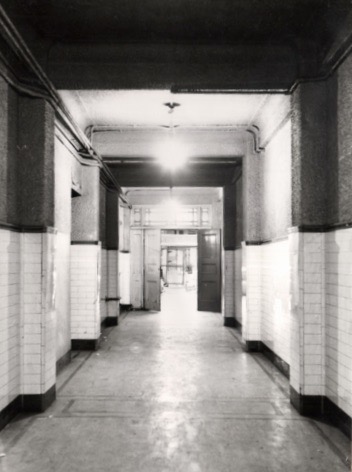
We were not unsupervised for long, for the bathing house was overseen by a formidably strict lady. Although her name escapes me, I can still distinctly picture her. She wore a plain brown dress, a pinny that had faded flowers on it, a headscarf tied on top of her head and black, flat, sensible shoes.
What I remember the most about her though was her loud, authoritative voice that you wouldn’t dare disobey, “NO MESSING ABOUT!” ringing through the rooms, putting the fear of God into us. In those days, children didn’t answer back. It was obvious we were there to get clean, not to have fun and play. Every so often she would pop her head in to check in on us – I highly doubt she did that with adults!
Being the eldest, I had the privilege of using the bath first, then when I got out, my brothers went in the same water, one after the other. We could hear people shouting “More hot water in number three please!” but we never asked for more hot water as we didn’t dare risk being shouted at. There were eighteen cubicles that contained baths and they were always busy, very much appreciated in the community.

The laundry was in the same building and was comprised of eighty washing sinks called the stalls, four industrial washing machines, ten dryers, lots of mangles, drying racks and ironing facilities. It was rare to have a washing machine at home then, but before my mum eventually got a twin tub and mangle, she used to do her laundry here too.
Children were not encouraged to go into the laundry, but often my mum would sneak me in. Going down the corridor was a small window, where tickets were purchased. Mum used to tell me to be quiet and duck under the window. Once inside, I had to sit still on a pile of washing. Nobody queried a child once inside as they knew how difficult it was to leave one at home.
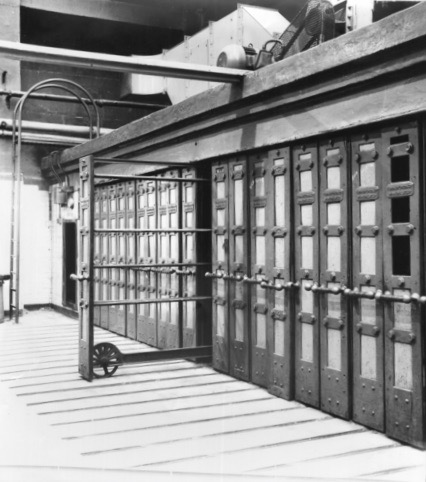
The laundry room was an incredible place. Stifling hot, incredibly noisy and crowded with women, busying away whilst chatting and laughing. First of all, you went to the stalls where collars, cuffs and overalls were scrubbed. They then went into the huge industrial washing machine. A member of staff would then put the clothes into a spinner as the general public were not allowed to operate it. After that, they went on the pull-out drying racks for about twenty minutes.
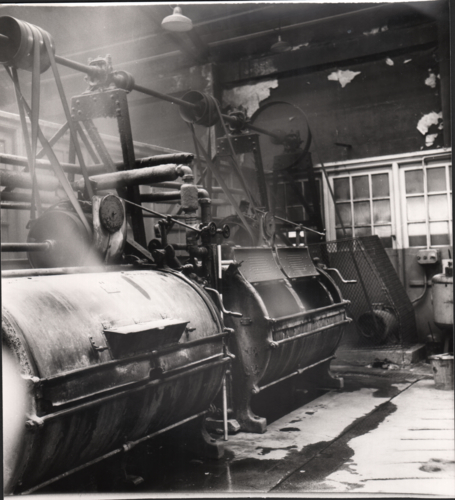
The laundry was a hub of activity, with an unrivalled atmosphere and position in the community. After all these years, I still remember it vividly, everything from the women, to the smell of the soap and detergents.
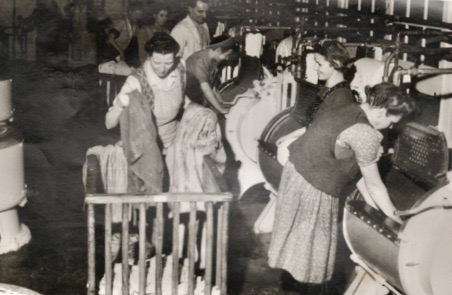
What a wonderful place Hodge Lane Wash House and Baths were.
Hodge Lane Wash House and Baths were designed by Manchester architect Charles Swaine and opened in 1928. After the opening ceremony the Manchester Guardian declared that it was the largest baths in the country (Manchester Guardian, 19. January, 1928, p. 13). At the time, the baths were part of a new scheme initiated by the city of Salford to offer swimming baths in addition to ‘slipper baths’ (freestanding baths tubs). The building was so large and so innovative because it had to fulfil “a long-felt want in one of the most densely populated districts of Salford.” (Manchester Guardian, 19. January, 1928, p. 13). More information on the building can be found here: https://manchestervictorianarchitects.org.uk/buildings/slipper-baths-and-public-wash-house-hodge-lane-salford
The images in our blog post were taken from Digital Salford that is part of the collections of Salford Museum and Art Gallery. These images were gifted to the museum and the original owner is not always known. If you are the copyright owner of an image, and if you would like to tell us more about it, please contact us. Please also contact us if you would like us to remove your image: themodernbackdrop@salford.ac.uk

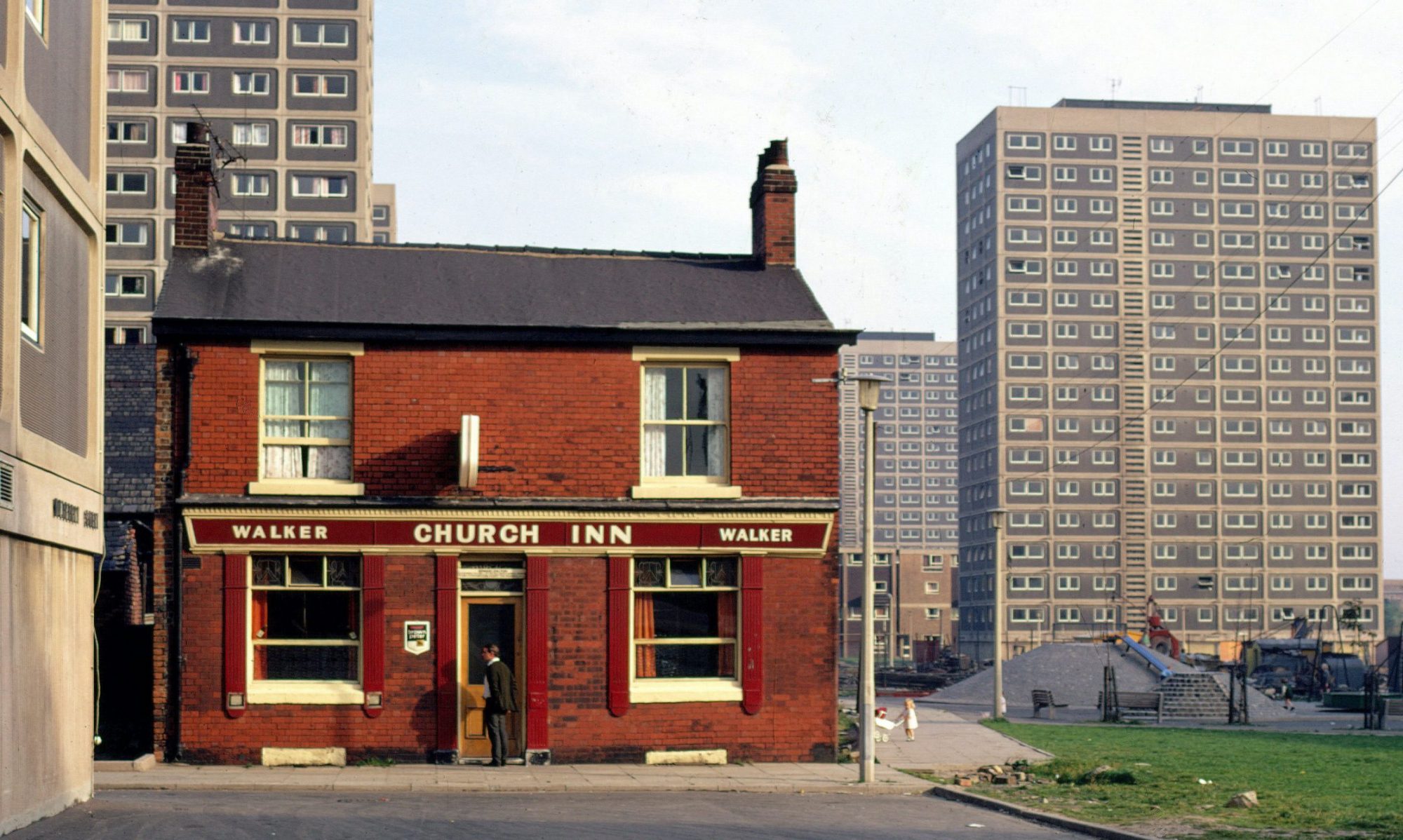
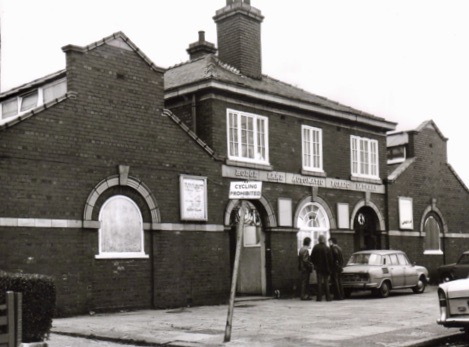
What lovely and eloquent piece of history. I felt I was there as I read through.
Wow I found that very interesting to read and it highlights how things have changed quickly. It was also interesting how there were only women in the wash house because men and women are more equal in society today. Thank you Ros!
Wow, my life entirely. Aunties used Hodge lane. I used Regent rd Baths for a bath. My Dad fixed up a bath in the bedroom and somehow fixed hot water from the washing machine. Before that a small tin bath in front of the fire . Great childhood. Community as well as family. Had nowt but Happy. Great parents, although Mother ill a lot. But great street Community who helped us kids. Ayr street next to Gas works
Basically described my childhood ?
Hi
The outside front pic is about mid 79
The car is a Skoda which my dad owned.
He was the manager of the wash house
And the entrance pic is the men’s bath entrance not the main entrance.
The main entrance was wider and went to the laundry and ladies baths. Plus it had skylight.